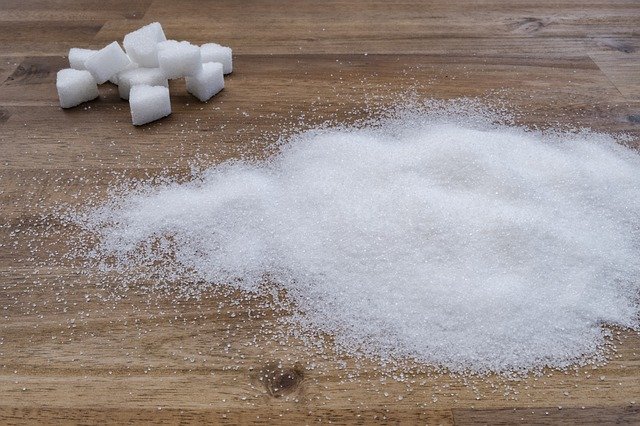When you read this, stop for a minute and think about how much sugar you’ve already consumed today. Did you stop for a flat white at your favourite coffee shop this morning? Did you eat a bowl of cereal for breakfast? Studies show that the average Aussie consumes about 60 grams of free sugars each day. That’s almost 14 teaspoons of white sugar! It’s time for Australia to sit up and learn how to quit sugar.

The World Health Organisation (WHO) recommends an average sugar intake of six teaspoons for women and nine teaspoons for men. Considering how harmful sugar is to our health, the amount of sugar consumed here is very alarming. Sugar wreaks havoc on your mental and physical health and is a leading cause of the rampant obesity that plagues our population.
In this article, we’ll discuss how to quit sugar without giving up your favourite foods.
How bad is sugar really?
Sugar is known to cause several long-term health issues. Excess sugar consumption puts you at risk for the following conditions:
- Stroke
- Obesity
- Heart disease
- Metabolic syndrome
- Type 2 diabetes
- Certain types of cancer
- Non-alcoholic fatty liver disease
- Ages you faster
- Erodes teeth and leads to poor oral health
It’s also extremely easy to consume large quantities of sugar in a short time. With alcohol and salty or spicy food, you know when you’ve consumed too much. With sugar, it’s not that easy. An extra teaspoon here or there seems harmless and nobody even counts the sugar in the biscuits or energy drinks that we consume. This is why it is important for you to learn how sugar enters your diet and how to quit sugar.
The benefits of quitting sugar
If you can learn how to quit sugar, you’ll notice a whole range of medical benefits such as:
- Healthy and easy weight loss
- Clearer skin and complexion
- Improved libido and fertility
- Boosted energy levels with no associated sugar crash
- Improved quality and quantity of sleep
- Regulation of autoimmune disease
Sugar consumption has been strongly linked to problems of mental health and wellbeing. The primary reason behind this is your gut health. If your gut is not healthy, your mind cannot be easy.

Problems with your metabolism also affect your entire nervous system. When you consume too much sugar, it encourages the bad bacteria in your gut. This causes an imbalance in the microbiome and leads to a whole set of debilitating mental health concerns such as depression and anxiety. One of the first benefits that most people report when they learn how to quit sugar is reduced anxiety.
What happens when I quit sugar?
As with any addictive substance, you are likely to experience withdrawal symptoms when you quit sugar. The actual experience varies on an individual basis. When considering how to quit sugar, you should know that you may experience some of these withdrawal symptoms:
- Sudden and unexpected changes in mood
- Lack of energy
- Loss of interest in daily tasks
- Feeling jittery or nervous
- Irritability and anger
- Difficulty falling asleep or bad quality of sleep
- Inability to focus
- Headaches
- Unexplained fatigue
Don’t be daunted by the list – you will probably experience only a few and they are likely to be mild. But while the symptoms seem unpleasant, the benefits will be invigorating. It has been compared to the lifting of a mental fog. When you learn how to quit sugar, you will also benefit from clearer skin, cravings for natural and healthier food, boosted energy levels and improved concentration.
Why is it so hard to quit sugar?
If you’re struggling with sugar addiction and blaming yourself for not being able to ditch such a benign substance, you’re not alone. Learning how to quit sugar is harder then it seems because sugar addiction is not only an emotional eating response but also has its roots in biology and is influenced by neurotransmitters.

Sugar activates the reward centre of your brain, releasing huge quantities of dopamine into your system. Compounding the problem are ghrelin and leptin, two hormones that stimulate sugar and carbohydrate cravings, which makes it difficult to learn how to quit sugar. It is not for nothing that sugar has been found be eight times more addictive than another white powder – cocaine.
Breaking the cycle of sugar addiction
Before we get into how to quit sugar, the most important thing to know is that you have to arrest the addictive sugar cycle. Eating excess sugar causes sugar cravings which only fuels the desire to eat more sugar. For this reason, going cold turkey is the best way to quit sugar, no matter how hard it might seem. The easiest ways to get started are:
- Ditch the stash and remove all packaged and processed food from your home.
- Learn the different names for sugar and read all labels before buying packaged food.
- If possible, avoid packaged food and consume only fresh whole foods.
It might seem like a monumental task to quit sugar when you’re experiencing sugar cravings but give it time. As your body and mind adjust to being without sugar, you’ll feel a reduction in cravings from seven to ten days after you quit sugar.
The hidden culprit – Identifying hidden sugars
Aussies consume over 81% of their daily sugar intake from high-calorie ultra-processed foods, according to the Australian Bureau of Statistics. If you’re avoiding desserts but still eating mayo, tomato sauce, pre-packaged fruit snacks, energy drinks or cereal, you’re still consuming sugar.
There are 43 different names for sugar on food labels in Australia. Many of these names are not easily recognizable as sugars, so you may not be aware of the ingredients that you’re consuming. If you’re trying to quit sugar, it is important to read through the list to familiarize yourself with the possible names of sugar on labels so that you are aware of what you are consuming.
If you’re just trying to cut down on sugar, a good rule of thumb is to avoid packaged or processed food as much as possible. You might also like to talk to a nutritionist online to help you design a better diet plan.

How to quit sugar as a family
It can be quite difficult to get sugar out of your family once the kids are used to it. Almost any food product made for kids is filled with sugar and sugar substitutes and just like adults, kids can get hooked to sugar too.
It isn’t easy to wean your child off their favourite brand of cereal or soft drink. However if you can ways to replace sugar with better and more creative alternatives, you’ll find that kids quit sugar quite naturally.

Try these solutions:
- When you go shopping for groceries, avoid buying items with high sugar content. Both kids and adults will have a hard time resisting temptation if there is a big bag of chocolate chip cookies on the counter.
- Educate older kids about sugar and how bad it is for you so they understand why and how to quit sugar. It also helps to give them measurable amounts of how much they are allowed to eat. For example: It is easier to tell them that they can have two cookies instead of 5 gms of sugar.
- Instead of adding ‘boring’ food to your list, replace sugary items with fun foods that are healthy and low in sugar content. For example: Buy a lolly mould so your family can make their own fruit pops or desserts and you can control how much sugar goes in.
- Give your kids the power to decide treats and make choices so they feel like they are in control of their own diet. This also allows you to set subtle restrictions without much resistance. For example: Do you want to eat a bowl of cereal for breakfast or eat an ice lolly after dinner instead?
- Always lead by example and quit sugar yourself too.
Helpful hacks to quit sugar
When trying to figure out how to quit sugar, the following tips can come in handy:
- Find healthy, low-sugar or no-sugar substitutes that will satisfy your sweet cravings so that you aren’t left feeling deprived or vulnerable to binge eating. Try nice cream (a frozen dessert with an ice-cream texture made from bananas and any flavours you want), healthy chocolate bars, or raisins or nuts dipped in pure dark chocolate.
- Drinking your calories is the fastest way to convert calories to fat. Steer clear of flavoured drinks, energy drinks, store-bought coffees with add-ons like whipped cream, and any kind of aerated drinks. Instead try sipping on iced water, tea or coffee brewed at home, or water flavoured with mint sprigs or lemon slices.
- Dealing with withdrawal symptoms is not easy so it is important that you be kind to yourself when you quit sugar. Take walks if you experience any form of craving. Indulge in calming activities like yoga and meditation to boost mood, reduce stress and enhance relaxation
- Consume fats but the good kind. They keep you satiated for longer and help maintain blood sugar levels. Nut butters, avocados and fatty fish are your best bets.
- Eat highly quality protein to regulate blood sugar and keep you full for longer, thereby reducing sugar cravings
- Avoid juicing your fruits. Some fruits have high amounts of sugar and are recommended only in small quantities. When you juice a fruit, you’re likely to consume more of it than you would if you ate it whole.
- Do read food labels when you’re buying anything. Learn the names of hidden sugars and be aware of the kinds of food that are high in hidden sugar.
Do I have to go on a diet to quit sugar?
While going cold turkey is the most effective way to quit sugar, you don’t have to steer clear of it forever. Being extreme about your sugar consumption can lead to relapses and binges, so it is recommended that you practice moderation instead of demonizing sugar.
This means that you do not have to give up your favorite desserts for life. Some indulgence is good for you when done mindfully and moderately. Treating yourself to the things you love can improve your mental wellbeing and emotional resilience. If you do decide to treat yourself, try to pick the best quality of ingredients and eat a small portion.

If you cheat on your no-sugar intentions, give in and enjoy it. The next day, you can go back to your sugar-free lifestyle. Knowing that you’ll return to your plan will make you feel less guilty and less likely to binge.
Mindful healthy eating is better than any diet when it comes to understanding how to quit sugar. Be aware of what you eat, how much you eat, and when you eat. Another factor that can help you learn how to quit sugar is exercise. Develop an exercise routine that you enjoy so that you will stick to it and enjoy the benefits of a sugar-free, active lifestyle.



